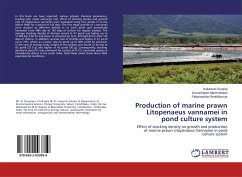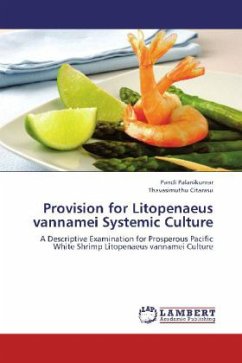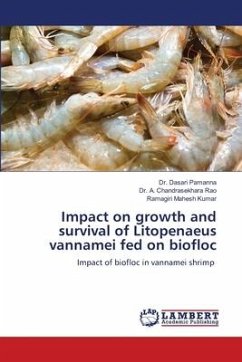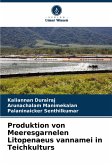In this book we have reported, various physico chemical parameters, feeding rate, water exchange rate, effect of stocking density and growth rate of Litopenaeus vannamei were evaluated using four ponds in in-vivo (direct field) for a period of 142 days. The first stage juvenile of L.vannamei were stocked at different density in to each pond and periodically harvested from 78th day to 142 days of culture for regular analysis. The average stocking density of shrimps reared at A1 pond was higher up to 11,093 kg/ 0.65 ha and lower at A4 pond up to 8, 379 kg/0.65 ha after 142 days of culture. In addition, survival rate of shrimps was higher in A1 pond up to 75%, where as a lower rate A2 pond up to 60% could be achieved. In the case of average body weight of the shrimps was found to be low at A2 pond (27.5 g) and higher at A3 pond (30 g). Consequently, stocking density of pond A1 was commend for culture of PL12 L.vannamei species in Pudukkottai district in the south India, Tamil Nadu under these direct field experimental conditions.
Bitte wählen Sie Ihr Anliegen aus.
Rechnungen
Retourenschein anfordern
Bestellstatus
Storno








